|
Paintings by Elsbeth Buschmann |
|
|
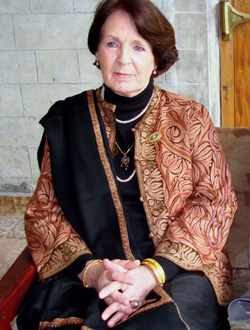 TThe work of Elsbeth Buschmann reflects the
experiences and insights of her ongoing inner journey. Her search
for truth took her to India, where she lives near Dharamsala in the
Himalayan Mountains. TThe work of Elsbeth Buschmann reflects the
experiences and insights of her ongoing inner journey. Her search
for truth took her to India, where she lives near Dharamsala in the
Himalayan Mountains.
“Nature is innocent . it has no mind and no
intellect. We use it like a mirror to reflect our longings for peace
and harmony , which are part of the inner
reality.”
Read more.. |
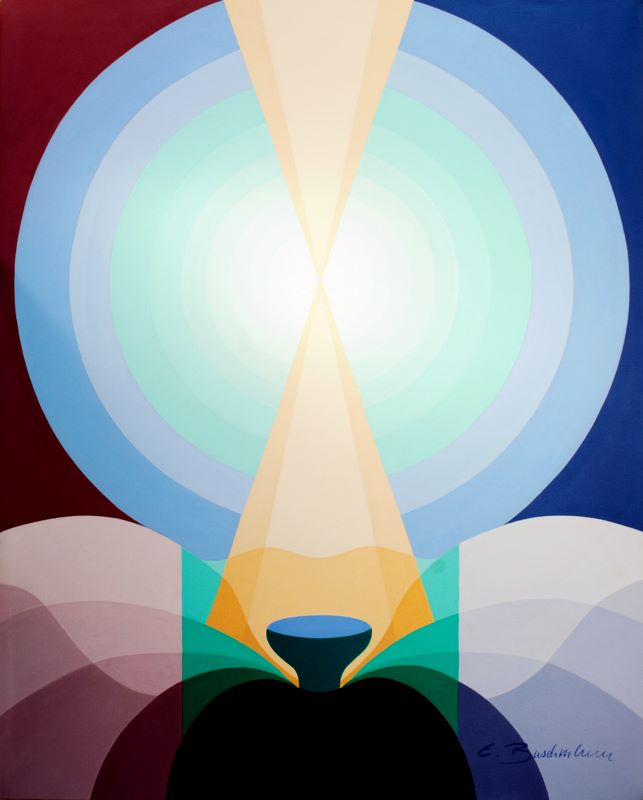 |
| |
|
|

New in Sidhbari
/Dharamsala
|
|
|
|
The
exhibition in ‘NAAM ART GALLERY’ shows paintings by Elsbeth
Buschmann - watercolours and acrylics - and oil paintings by Alfred W.
Hallett.
Elsbeth Buschmann, is a professional painter from Germany, having
studied painting in London and Paris .She lived in many countries
where she held exhibitions, especially in the USA where she received
various awards. Her paintings are in private collections in Germany,
USA, Scotland, India and Switzerland. In India she held solo
exhibitions at AIFAX, New Delhi and TAG, the Art Gallery of the Taj
Mahal Hotel, Mumbai. She also took part in ‘The Himalayan National
Exhibition of Art’ and was awarded.
A.W.Hallett is a very well renowned painter from England. He studied
art in London and participated in two exhibitions of the Royal Academy
of Art, London which entitled him to become a Fellow of the Academy.
He held various international exhibitions. He lived over 40 years at
Dharamsala and became very popular in Himachal Pradesh. Many of his
paintings are owned by the government of Himachal Pradesh. A.W.
Hallett held a special interest in the culture and scenery of Himachal
Pradesh which are the main elements of his work. He passed away in
1986 .
The display of his paintings in ‘NAAM ART GALLERY’ are a tribute to
this great painter. |
|
Paintings by S Sobha
Singh
|
|
|
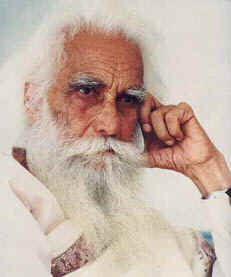 I only want to paint beauty and the
goodness of life, which are getting rarer day by day. With me, the
concept of 'Satyam, Shivam Sundaram' becomes 'Sundram, Shivam and
Satyam' (Beauty, Goodness and Truth) in that order. I only want to paint beauty and the
goodness of life, which are getting rarer day by day. With me, the
concept of 'Satyam, Shivam Sundaram' becomes 'Sundram, Shivam and
Satyam' (Beauty, Goodness and Truth) in that order.
One of Sobha Singh's Greatest Masterpieces - "Guru Nanak" in the
"Aashirwad" pose. This was created during late 50's. The hand of
Guru Nanak was recreated by a renowned palmist Pundit Agnihotri of
Hamirpur after a thorough study of the 'Janam Patri' of Guru
Nanak
|
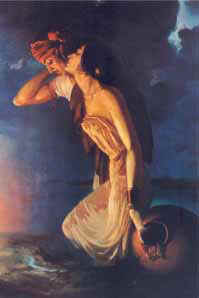 |
|
Paintings by A w Hallett |
|
|
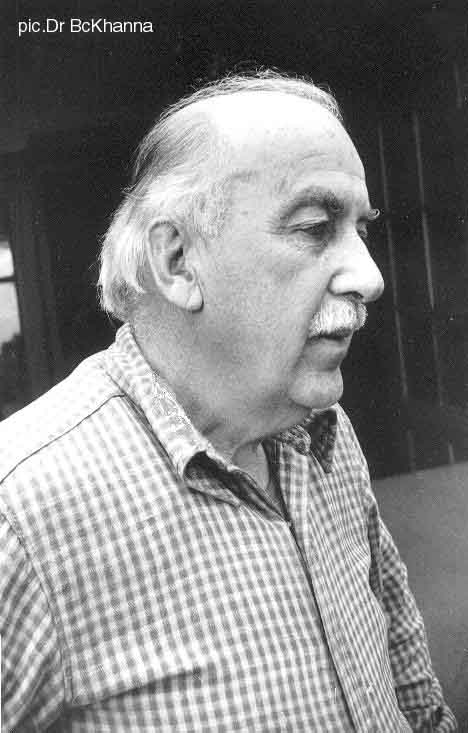 Alfred Hallett: born
1914 in England, he exhibited twice at the Royal Academy, London
(1937 and 1938) before migrating to British India in 1940 where he
managed a cloth mill in Dhariwal, Punjab and from where he was able
to buy the property on Dharamkot to pursue his love of painting
full-time. Known primarily as a figure painter, his prolific output
of portraits, landscapes and imaginative religious and abstract oil
paintings can be seen today from Amritsar to New Delhi as well as on
walls in Southern England. A confirmed bachelor all his life, he
died in his beloved Dharamkot studio in 1986, aged
72 Alfred Hallett: born
1914 in England, he exhibited twice at the Royal Academy, London
(1937 and 1938) before migrating to British India in 1940 where he
managed a cloth mill in Dhariwal, Punjab and from where he was able
to buy the property on Dharamkot to pursue his love of painting
full-time. Known primarily as a figure painter, his prolific output
of portraits, landscapes and imaginative religious and abstract oil
paintings can be seen today from Amritsar to New Delhi as well as on
walls in Southern England. A confirmed bachelor all his life, he
died in his beloved Dharamkot studio in 1986, aged
72
|
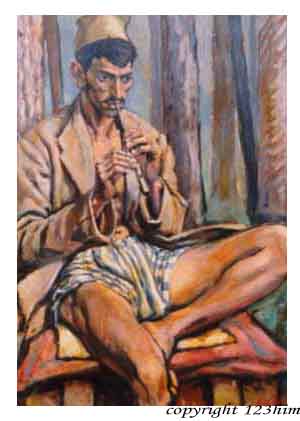
|
|
Paintings by Nicholas
Roerich |
|
|
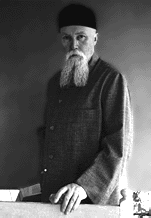 The pursuit of refinement and beauty was sacred for Roerich.
He believed that although earthly temples and artifacts may perish,
the thought that brings them into existence does not die but is part
of an eternal stream of consciousness — man's aspirations nourished
by his directed will and by the energy of thought. Finally, he
believed that peace on Earth was a prerequisite to planetary
survival and the continuing process of spiritual evolution, and he
exhorted his fellow man to help achieve that peace by uniting in the
common language of Beauty and Knowledge. The pursuit of refinement and beauty was sacred for Roerich.
He believed that although earthly temples and artifacts may perish,
the thought that brings them into existence does not die but is part
of an eternal stream of consciousness — man's aspirations nourished
by his directed will and by the energy of thought. Finally, he
believed that peace on Earth was a prerequisite to planetary
survival and the continuing process of spiritual evolution, and he
exhorted his fellow man to help achieve that peace by uniting in the
common language of Beauty and Knowledge.
Nicholas Roerich died in Kullu on December 13, 1947. His body
was cremated and its ashes buried on a slope facing the mountains he
loved and portrayed in many of his nearly seven thousand
works.
|
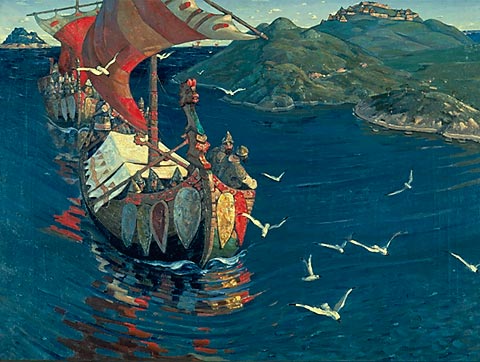
|
| Sculpture Gallery by Ajay |
|
|
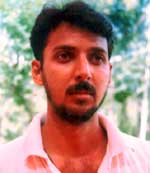 Sculpture is a mean as well as an objective for my expression.
Ranging figurative work to those involving only abstracts such as
light and colour. My sculpture make the most use of
locally available materials. Social commentary underlined with self
depreciating humour has been one of the main features of my
figurative work. Using
light as a material, I have endeavored to explore the relationship
between object and drawing where mass and space is provide a frame
of reference. In all such works I have followed the ancient Indian
tradition of the frontal sculpture. Sculpture is a mean as well as an objective for my expression.
Ranging figurative work to those involving only abstracts such as
light and colour. My sculpture make the most use of
locally available materials. Social commentary underlined with self
depreciating humour has been one of the main features of my
figurative work. Using
light as a material, I have endeavored to explore the relationship
between object and drawing where mass and space is provide a frame
of reference. In all such works I have followed the ancient Indian
tradition of the frontal sculpture.
|

|
|
INDIAN
DRAWINGS: |
|
|
16th to19th century Pahari
drawings, done between the seventeenth and nineteenth centuries, are
comparatively calmer, refined, finely drawn and lyrical. These
drawings are among the most graceful and appealing in Indian
painting. Work of the artist families of Guler and Chamba, chiefly
from the eighteenth century, is remarkable and displays all the best
qualifies of Pahari painting, While the style of these two schools
is derived from the late Mughal paintings, the mood is not; they are
gentle, spontaneous and more lyrical |
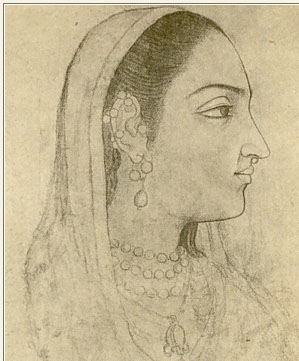 |
| The World of Pahari Miniature
Painting :- The activity of the Pahari painting
continued till the close of the 19th century . The changes in
this period reflect degenerating standards because of the prevailing
political conditions Read more |
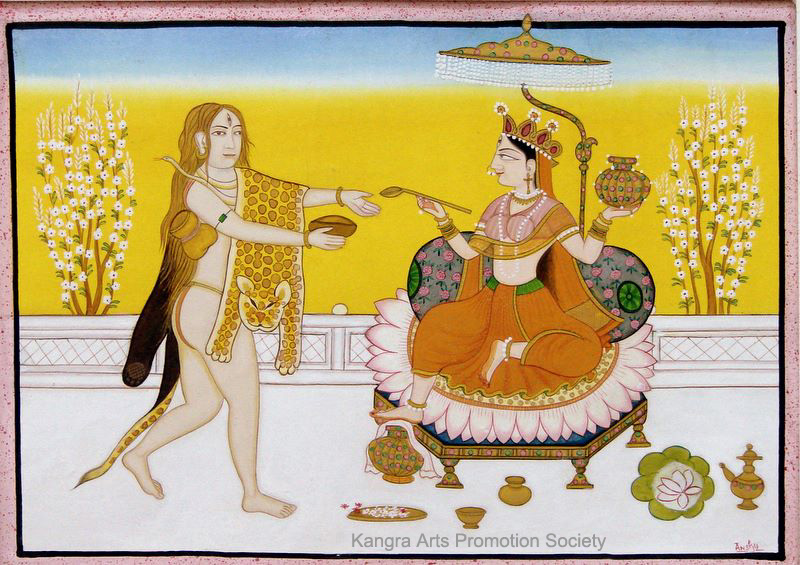 |
|
Paintings by B. S.
Baloria |
|
|
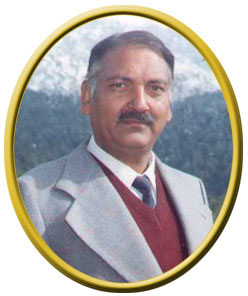 B.S.Baloria born on 27th
Jan. 1953 at Dharamsala, Himachal Pradesh was facinated and inspired
by the Indian heritage, culture and Great Himalayas in multifarious
feild of art.His creativity and style of painting depicts the inner
appearance with prudent and careful use of colours. His drawings and
paintings are widely accepted. B.S.Baloria born on 27th
Jan. 1953 at Dharamsala, Himachal Pradesh was facinated and inspired
by the Indian heritage, culture and Great Himalayas in multifarious
feild of art.His creativity and style of painting depicts the inner
appearance with prudent and careful use of colours. His drawings and
paintings are widely accepted.
Receipent of many awards, in
different medias presents the sensibility of the current panorama of
the life arround him.
|
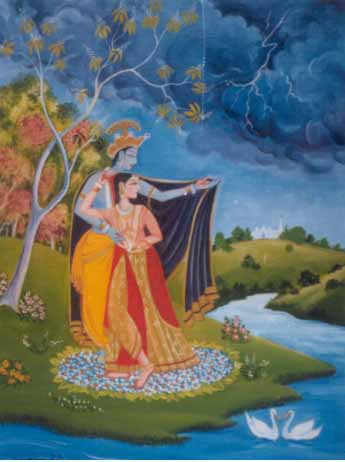
|
|
|
|
|
|

